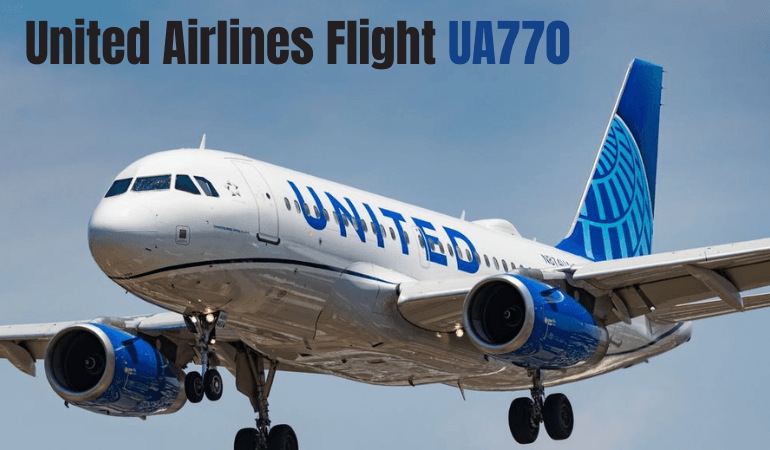United Airlines Flight UA770 Emergency Diversion: A Detailed Look into the Incident

Air travel is generally considered one of the safest modes of transportation. However, occasionally, unexpected events occur that require immediate action and fast decision-making by the crew. One such incident took place aboard United Airlines Flight UA770, which experienced an emergency diversion. In this article, we will dive deep into what happened, how the airline responded, and the overall passenger experience. So buckle up and get ready for a detailed overview of this event.
What Happened on United Airlines Flight UA770?
United Airlines Flight UA770 was originally scheduled to fly from Chicago O’Hare International Airport (ORD) to Los Angeles International Airport (LAX). However, during the flight, the situation took a turn for the worse, leading to an emergency diversion. In aviation, emergencies can range from medical issues to technical malfunctions, and in the case of UA770, the crew had to make a crucial decision to ensure the safety of everyone aboard.
Why Did United Airlines Flight UA770 Divert?
Unforeseen Technical Difficulty
The exact reason behind the diversion has not been fully disclosed to the public, but a technical issue is often the primary cause of such decisions. Aircraft systems are equipped with multiple safety features that constantly monitor the plane’s performance. If something unusual is detected, the crew has to act swiftly to avoid any potential hazards.
Medical Emergency
Another potential reason could have been a medical emergency involving a passenger. In such cases, airlines are trained to handle emergencies swiftly, sometimes diverting the flight to the nearest airport with medical facilities to attend to the situation. In this case, the airline diverted Flight UA770 to a nearby airport, possibly due to a health issue with a passenger or crew member.
The Emergency Diversion: What Was the Response?
Crew’s Quick Decision-Making
The flight crew aboard United Airlines Flight UA770 acted swiftly to ensure the safety of the passengers. Their prompt response likely minimized any potential risk and kept the situation under control. The captain and first officer were trained to handle emergency diversions, and they followed standard protocols, which included communicating with air traffic control and making the decision to land at the nearest suitable airport.
Communication with Passengers
Communication is key during any flight emergency. United Airlines made sure passengers were informed about the situation in a clear and calm manner. Passengers were likely provided with timely updates to reduce panic and prepare them for the emergency landing. While the exact nature of the incident was not revealed immediately, the transparency shown by the airline helped passengers stay informed.
How Did the Emergency Diversion Affect Passengers?
Passenger Safety and Comfort
While it’s always unsettling to hear about emergency diversions, passengers aboard United Airlines Flight UA770 were treated with care and attention throughout the process. Emergency landings are handled with the utmost priority, ensuring passengers’ safety and comfort. Upon landing, emergency responders are often stationed at the airport to assist passengers and manage any immediate needs.
Delays and Flight Rescheduling
After an emergency diversion, flights often experience delays as the situation is evaluated and resolved. In some cases, the aircraft may need maintenance or inspection before continuing its journey. Passengers on Flight UA770 likely experienced some inconvenience due to the delay, but the airline would have made efforts to minimize disruptions. For those with connecting flights, United Airlines typically arranges alternative travel options.
What Happens After an Emergency Diversion?
Aircraft Inspection and Maintenance
After such an event, the aircraft in question undergoes a thorough inspection by aviation authorities. The aircraft is carefully checked to ensure it is safe to fly again. If any technical issue was the cause of the diversion, repairs would be made before the aircraft continues its journey.
Airline’s Commitment to Passenger Care
United Airlines has a reputation for responding efficiently to customer needs, especially in times of distress. Post-incident care includes offering compensation for delays, rebooking passengers on alternate flights, or providing meals and accommodations, if necessary. United Airlines ensures that every passenger is taken care of in such cases.
Key Takeaways from United Airlines Flight UA770 Emergency Diversion
- Safety First: The priority during any emergency diversion is ensuring the safety and well-being of passengers and crew. United Airlines acted quickly to make the necessary arrangements.
- Technical or Medical Emergencies: The exact cause of the diversion remains unclear, but it was likely a technical malfunction or medical emergency requiring a safe diversion to the nearest airport.
- Communication is Key: Keeping passengers informed during such situations reduces anxiety and allows them to prepare for what’s to come.
- Swift Response from Crew: United Airlines crew demonstrated swift decision-making to ensure minimal disruption and risk to passengers.
- Post-Incident Support: United Airlines continues to offer support in the form of rescheduling, compensation, and addressing any immediate needs of the affected passengers.
Conclusion: A Reminder of Air Travel’s Safety Standards
While the United Airlines Flight UA770 emergency diversion may have been an unsettling experience for passengers, it highlights the high safety standards and preparedness of modern air travel. Airlines, including United, maintain robust protocols to ensure safety during unexpected events.
As passengers, it’s important to trust the professionals in charge of flight operations. In the case of United Airlines Flight UA770, the crew’s actions likely ensured that the passengers reached their destination safely.




